Search
To search for an exact match, type the word or phrase you want in quotation marks.
A*DESK has been offering since 2002 contents about criticism and contemporary art. A*DESK has become consolidated thanks to all those who have believed in the project, all those who have followed us, debating, participating and collaborating. Many people have collaborated with A*DESK, and continue to do so. Their efforts, knowledge and belief in the project are what make it grow internationally. At A*DESK we have also generated work for over one hundred professionals in culture, from small collaborations with reviews and classes, to more prolonged and intense collaborations.
At A*DESK we believe in the need for free and universal access to culture and knowledge. We want to carry on being independent, remaining open to more ideas and opinions. If you believe in A*DESK, we need your backing to be able to continue. You can now participate in the project by supporting it. You can choose how much you want to contribute to the project.
You can decide how much you want to bring to the project.
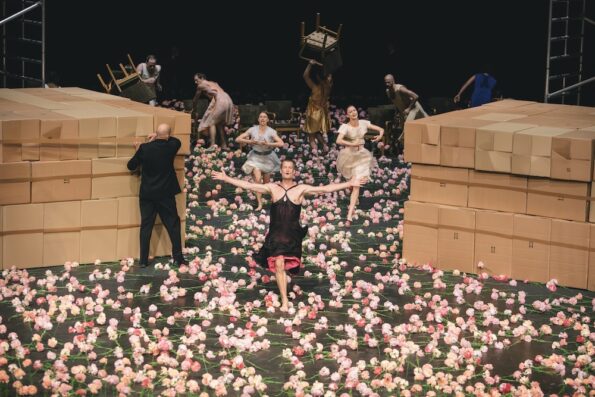
As in other pieces by Tanztheater Wuppertal Pina Bausch, Nelken (Carnations) pulses with emotional ambivalence, affectionate harshness, and bittersweet tenderness. Performed in late July at Vienna’s Burgtheater as part of the ImpulsTanz festival, the work unfolds atop a stage covered in thousands of carnations—sketching out a contemporary Garden of Eden where innocence, sensuality, and desire intertwine in a fragile equilibrium; a precarious paradise that gradually erodes as the piece unfolds.
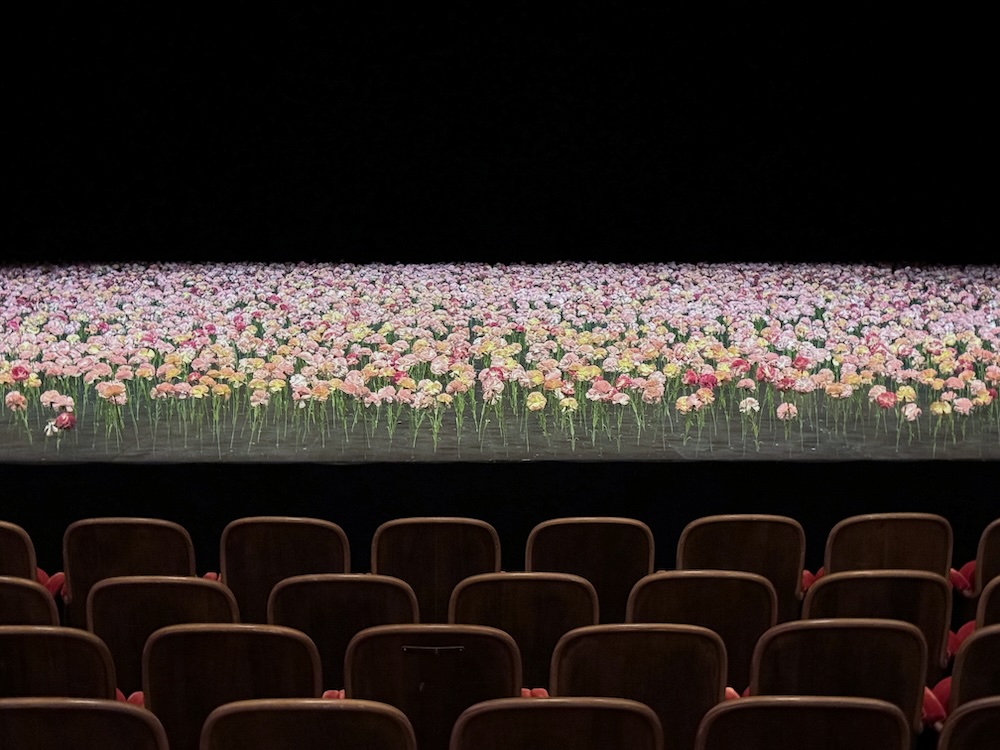
From Purity to Disturbance
Each performer carries a chair, entering cautiously, as if stepping reverently into a fertile, untouched refuge. Richard Tauber’s voice floats in: “Schön ist die Welt, wenn das Glück dir ein Märchen erzählt” (“The world is beautiful when happiness tells you a fairytale”). Some approach the audience with a conspiratorial air, gently pulling spectators from their seats. A woman cries like a child, then chastises herself like an adult—possessed by an inner maternal voice demanding self-control. From this opening, Nelken establishes its ambiguous tone—frequently regressing into childhood—suspended between tenderness and unease. Through a rhapsodic, anti-narrative dramaturgy, Tanztheater Wuppertal reveals that the loss of innocence is not a singular event but a permanent wound.
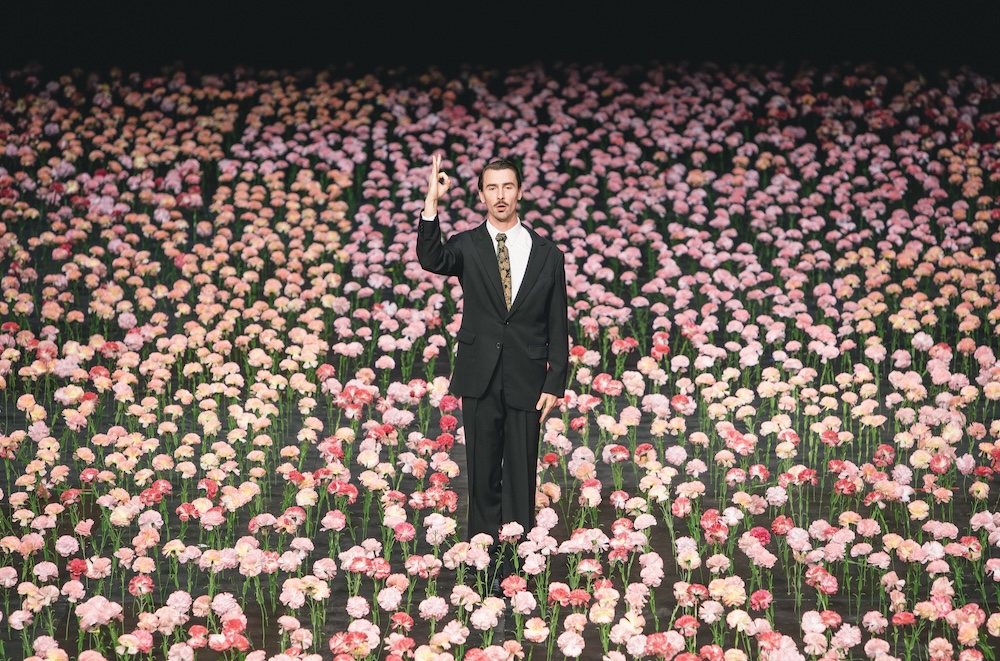
Without drama, Nelken softly draws the viewer into a space of intimate affection. Love and lost innocence are the core concepts of this dive into desire’s inner landscape. Yet within this restricted Eden—despite its joyful, paradisiacal atmosphere—candor coexists with menace. The song The Man I Love, translated into sign language by Reginald Lefebvre, permeates the work with a deaf, persistent longing, rendered with touching nostalgia. That it has always been performed by a man since the 1982 premiere is no minor gesture: Nelken is an affective declaration where tenderness and desire know no gender, nor sensory or communicative barriers. That moment condenses the utopian love that radiates from the piece.
Between Play and Perplexity
The choreography oscillates between spontaneous joy and disturbing imagery: men dressed as little girls skipping and compulsively sniffing and destroying carnations; boys forcing themselves to cry after rubbing onions on their faces; two men exchanging a cheek kiss followed by a slap… Yet amid the confusion, moments of exquisite beauty emerge: a heartbeat amplified through a microphone; Andrey Berezin spraying the theatre with two air fresheners like a crop-dusting plane; Simon Le Borgne confronting the audience with his deft classical dance footwork.
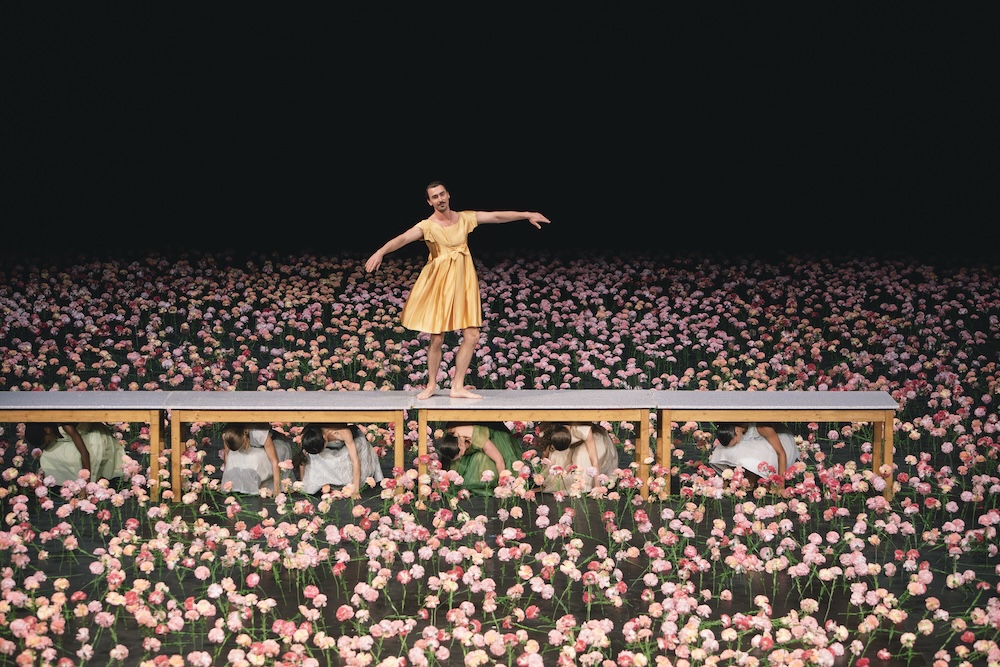
Nelken progresses with Pina Bausch’s signature sense of calculated scenic commotion. Games like red light, green light follow the dream logic of a gratifying nightmare, interlaced with musical fragments by Schubert, Lehár, Gershwin, Armstrong, or Sophie Tucker. Scenes brush up against one another without seeking resolution, composing a constellation of emotional states that fluctuate between candor and despair, tenderness and estrangement, nostalgia and distortion. The garden, idyllic at first, begins to show its cracks: not everything is allowed in this restrictive Eden.
Undulations and Shifts: The Fragile Dramaturgy of Nelken
This sea of eight thousand hand-embroidered silk carnations set expectations sky-high—soon tempered by an uneven dramaturgy and occasionally hesitant structure. The work opens gently, with an air of apparent joy, but tension surfaces quickly. As the piece advances, imbalances in rhythm and pacing affect its cohesion. Some unaccompanied scenes stretch out longer than necessary, diluting dramatic tension and stalling momentum. Nelken suffers from a lack of clearly choreographed sequences and could benefit from more musical accompaniment to reinforce its flow. In this production, theatrical gesture and action dominate over physical dance, which in some passages deprives the work of the embodied vitality so characteristic of other Bausch pieces.
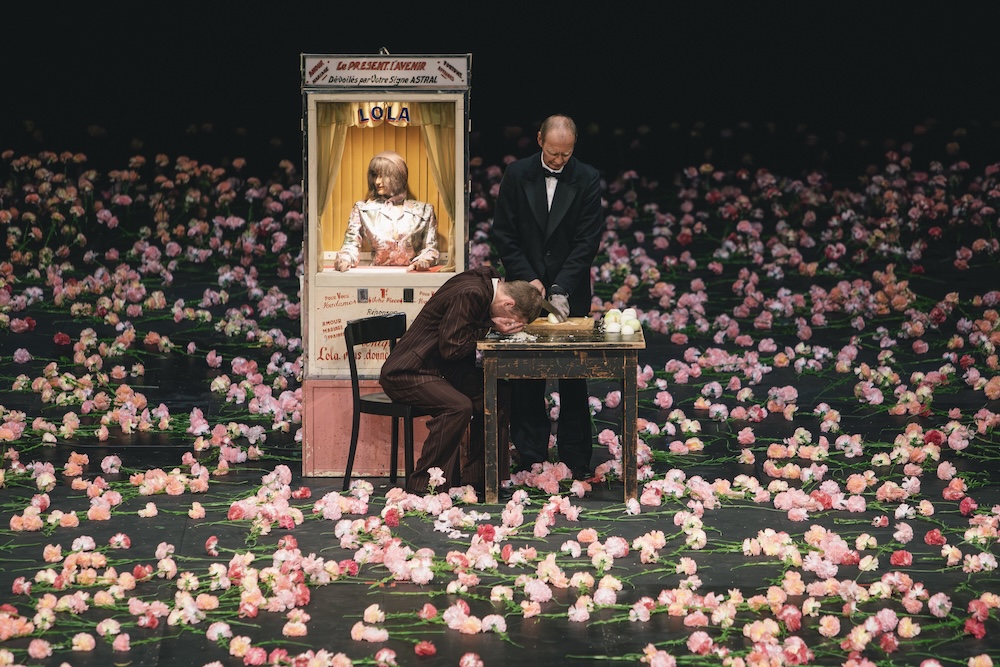
In this meticulously orchestrated chaos, male performers often appear cross-dressed as girls, adopting caricatured behaviors. An authoritarian guard patrols the sometimes-shadowy borders of this lost paradise, demanding passports and humiliating those questioned. The barking of two onstage dogs amplifies the sense that not everything is permitted in this artificial Eden. The undeniable climax combines frantic chair-bound group dances with the acrobatics of four stunt specialists, amid the anguished cries of Blanca Noguerol. The group dance sequence surges toward and recedes from the proscenium with agility—a clever zoom-in/zoom-out effect that gives the audience the sensation of manipulating a telephoto lens, overwhelmed by a heady and irresistible vertigo.
The Embrace as Final Consolation
Throughout the performance, Naomi Brito weaves in and out of the stage wearing white knickers, heels, and an accordion. But it’s only at the end that she performs the dance of the seasons to the music of Louis Armstrong. The rest of the ensemble joins her in a magical collective movement that links dance-theatre to nature’s cycles. In the closing stretch, the dancers invite the audience to stand and practice the gesture of the embrace, later mingling with spectators to offer actual hugs. With hands raised, forming arches over their heads, some explain with childlike sincerity why they wanted to become dancers. The piece ends like a class photo from an imaginary children’s ballet school: everyone together, posing tenderly with their arms in couronne.
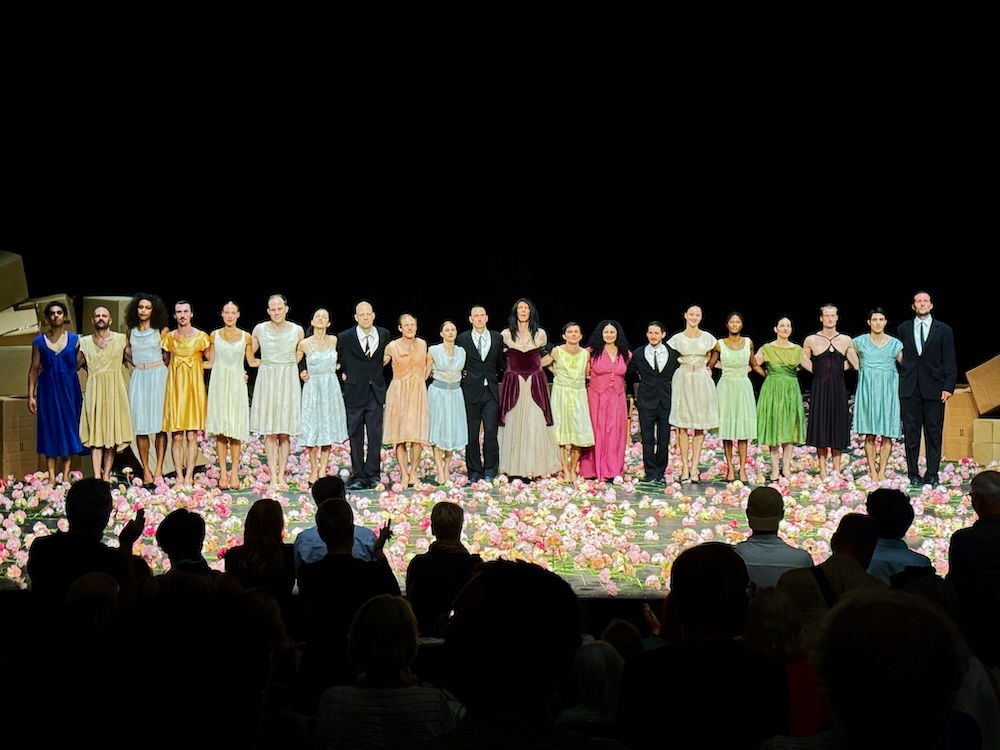
Across 110 minutes, Nelken flows with a hesitant rhythm—at times festive, at others desolate. A fusion of visual beauty and emotional contrasts, it poetically embodies a utopian microcosm where sensuality, innocence, and fragility coexist in strange harmony. Among trampled carnations and suspended gestures, it suggests that happiness—delicate and contradictory—can still be shared. Yet the work holds firmly to one central idea: lost innocence cannot be reclaimed. Even as we continue to embrace each other, the scars remain etched into that interior Eden which—like love—blooms, withers, and blooms again.


Paco Arteaga is a 360º journalist: he takes photos and videos, writes, translates, edits in CMS (WordPress, Storyblok) and Photoshop, optimizes SEO, proofreads and manages two blogs: Berlinamateurs.com and Withinflorence.com.m. He is attracted to art in all its manifestations. Portfolio: www.paconeumann.com
"A desk is a dangerous place from which to watch the world" (John Le Carré)